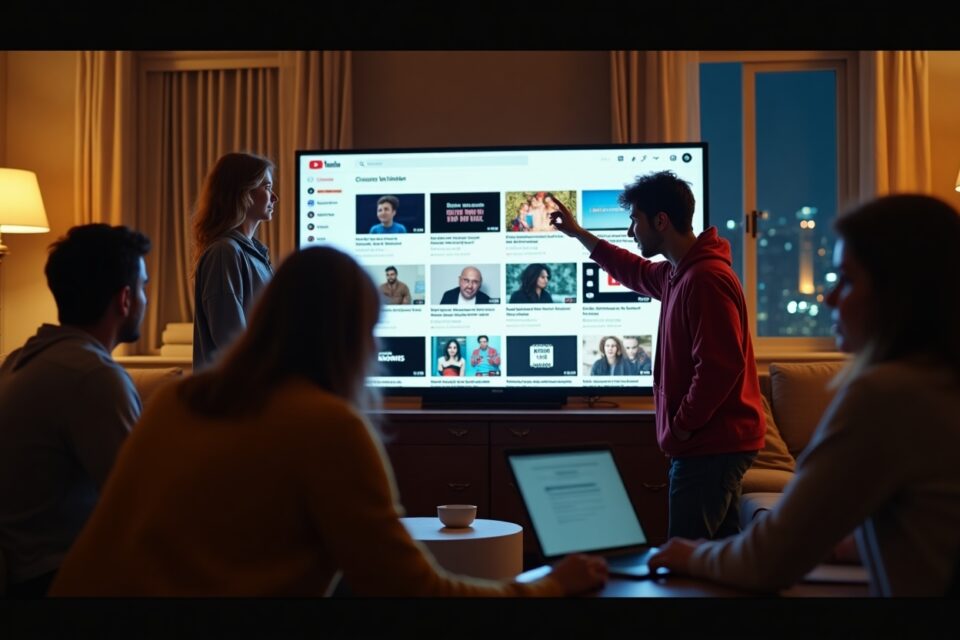Why YouTube’s Crackdown on Propaganda Channels Will Redefine Global Media Dynamics
Hey there! So, the global information war — sounds intense, right? It’s a term buzzing around, especially in the context of platforms like YouTube. Imagine YouTube as this immense stage where anyone can broadcast their voice, and it’s no surprise that governments are using it to spread their narratives. Understanding YouTube propaganda channels is crucial because they play a significant role in shaping what viewers perceive as truth around the globe.
If you’re anything like me, you probably hop onto YouTube daily to watch everything from cat videos to cooking tutorials. But beneath the surface, there’s a sprawling network of channels pushing state-sponsored agendas. This isn’t just about what conspiracy theorists think. It’s about real-life situations where information warfare isn’t fought with guns but with pixels.
Let’s dive into why this matters, shall we?
Censorship has long been a tool for controlling narratives, and media has always been a battlefield for influence. Think back to wartime propaganda posters — now swap posters for YouTube videos, and you get the modern picture. In today’s digital age, it’s not just about hiding information but also about flooding the media with skewed narratives.
Historically, there have always been efforts to shape public opinion, but the scale has changed. YouTube, with its billions of users, has become a hotspot for what we call information warfare. Countries like Russia and China are pushing their agendas through state-sponsored channels, reaching massive audiences without a hitch. Famous examples include Russia Today’s (RT) and CCTV from China, which, according to a recent report by CNBC, are increasingly influential.
Now, if you’re wondering how many people tune into these channels, it’s staggering — millions worldwide. And as much as YouTube tries to regulate, some channels slip through, leaving a lasting impact on those who watch. If we’re talking numbers, these state-sponsored channels have the capacity to not just reach but potentially manipulate the perceptions of global viewers, subtly influencing views on international issues.
Disinformation campaigns, a sophisticated twist on old-school propaganda, have become common. With fake news, edited clips, and sensational headlines, these channels create narratives that cater to biases or alter facts. But it’s not just about spreading lies; it’s about creating doubt and controversy, leaving people questioning what’s real.
And, interestingly, while YouTube demonetizes or bans certain channels, others continue to thrive and spread disinformation, affecting public opinion on heated topics. The challenge for YouTube is immense and complex, akin to refereeing a massive, never-ending game where the rules constantly change.
Let’s dig a bit deeper. YouTube propaganda channels significantly mold public perceptions, often without viewers even realizing. Essentially, the more people watch, the more they’re swayed, as these channels slowly shape their viewpoints on issues ranging from global politics to social norms.
Content regulation on YouTube attempts to neutralize misinformation, but the effectiveness often feels like patchwork. Remember the game of \”whack-a-mole\” at the arcade? That’s content regulation — as soon as one problematic video is taken down, another pops up.
Experts have mixed opinions on these channels’ prowess. Some argue they’re losing influence as people become media-savvy, while others warn of their subtle, pervasive impact. A report highlighted by BBC asserts that these channels subtly infiltrate the daily information diet, altering the perception of unwitting viewers.
Now, peering into the future, it’s clear propaganda channels won’t be disappearing anytime soon. What’s likely, though, is the evolution in YouTube’s content policies. With mounting pressure, there’s hope for stricter regulations and more sophisticated detection technology, somewhat like how antivirus software keeps evolving to outsmart new viruses.
Tech companies, including YouTube, face a pivotal role. It’s not just about removing harmful content but also about fostering a culture of accountability and transparency. And as we become more discerning consumers of content, there could be a shift toward stronger media literacy — teaching people to critically evaluate information, sort of like equipping them with a digital lie detector.
Before you get sidetracked by another YouTube video, here’s something to chew on: The content you watch can shape your opinions, knowingly or unknowingly. So, let’s challenge ourselves to be more discerning viewers. Dive deep, question narratives, and always seek multiple perspectives.
For now, let’s all commit to nurturing our media literacy. It’s like adding a layer of armor in the vast, sometimes deceptive digital world. And if you’re keen to keep up with insights like these, maybe consider subscribing for more updates on how media and technology dance this intricate dance.
For additional insights, feel free to check out the related articles on BBC and The Guardian. Stay informed, my friend!
